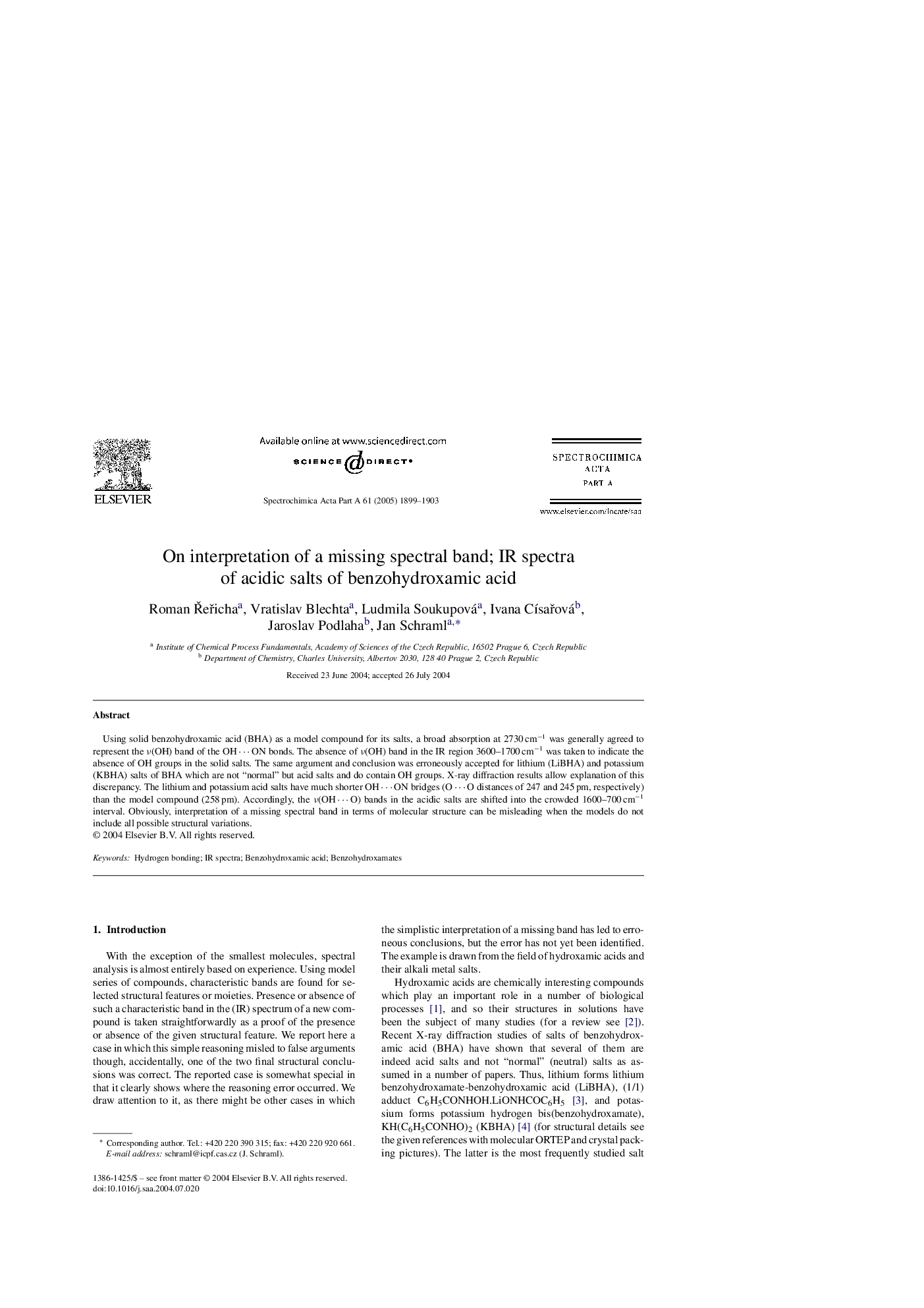| Article ID | Journal | Published Year | Pages | File Type |
|---|---|---|---|---|
| 10558222 | Spectrochimica Acta Part A: Molecular and Biomolecular Spectroscopy | 2005 | 5 Pages |
Abstract
Using solid benzohydroxamic acid (BHA) as a model compound for its salts, a broad absorption at 2730 cmâ1 was generally agreed to represent the ν(OH) band of the OHâ¯ON bonds. The absence of ν(OH) band in the IR region 3600-1700 cmâ1 was taken to indicate the absence of OH groups in the solid salts. The same argument and conclusion was erroneously accepted for lithium (LiBHA) and potassium (KBHA) salts of BHA which are not “normal” but acid salts and do contain OH groups. X-ray diffraction results allow explanation of this discrepancy. The lithium and potassium acid salts have much shorter OHâ¯ON bridges (Oâ¯O distances of 247 and 245 pm, respectively) than the model compound (258 pm). Accordingly, the ν(OHâ¯O) bands in the acidic salts are shifted into the crowded 1600-700 cmâ1 interval. Obviously, interpretation of a missing spectral band in terms of molecular structure can be misleading when the models do not include all possible structural variations.
Related Topics
Physical Sciences and Engineering
Chemistry
Analytical Chemistry
Authors
Roman ÅeÅicha, Vratislav Blechta, Ludmila Soukupová, Ivana CÃsaÅová, Jaroslav Podlaha, Jan Schraml,
